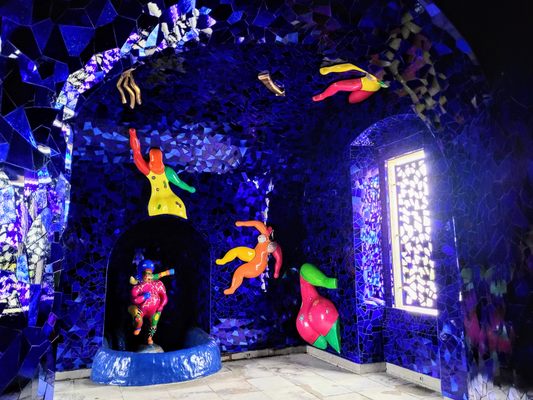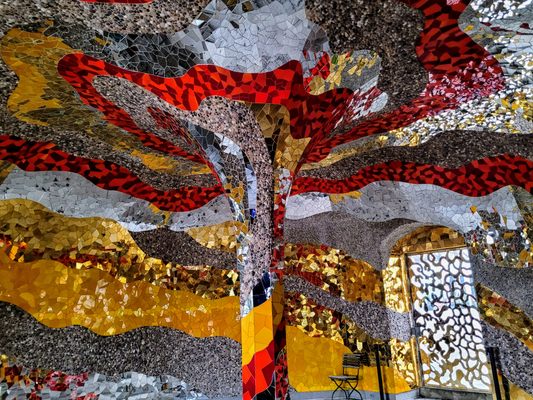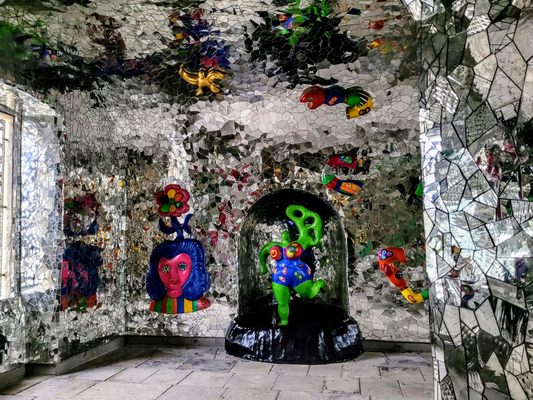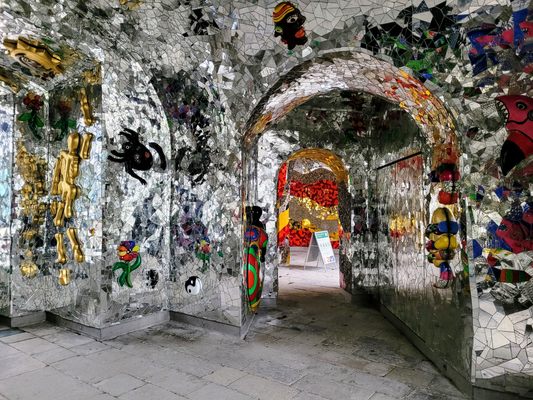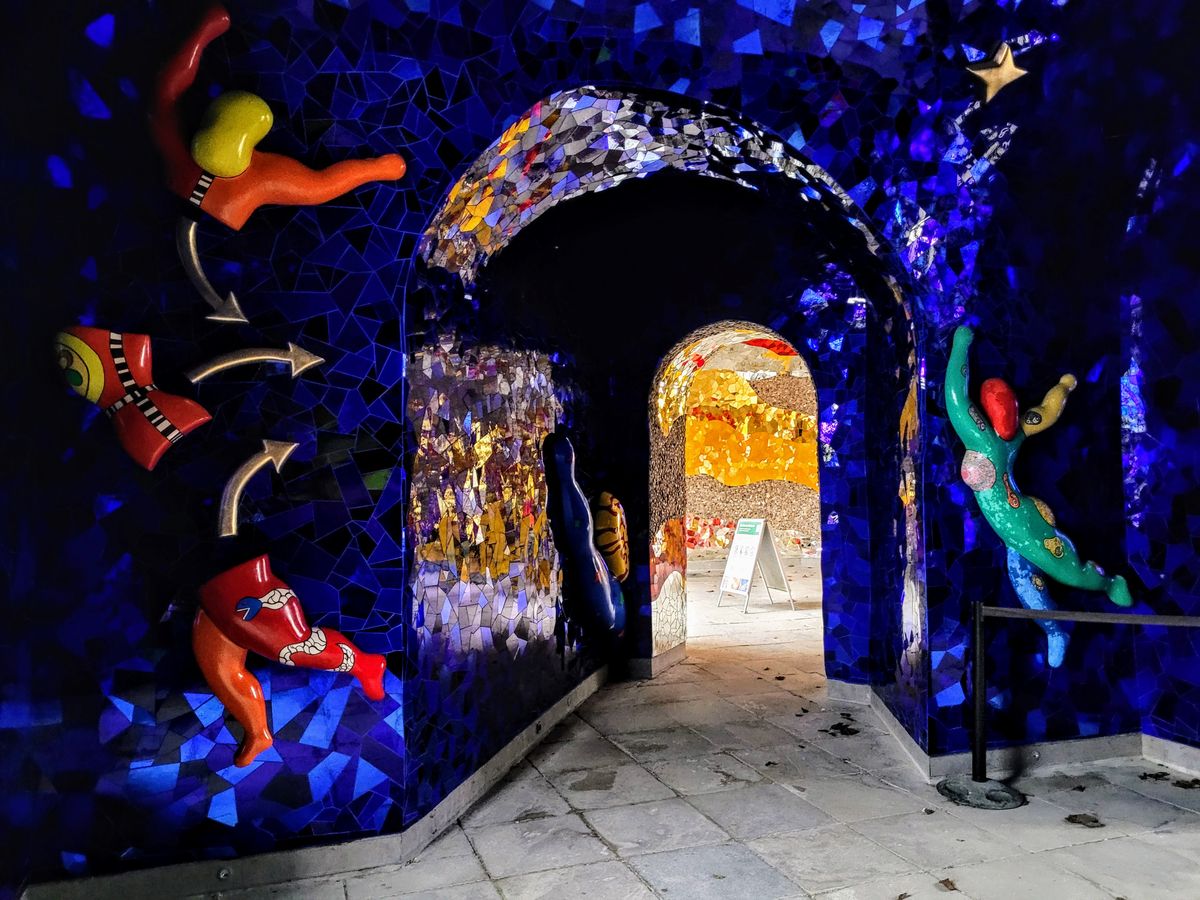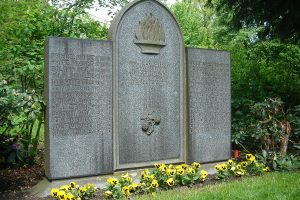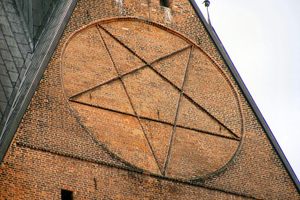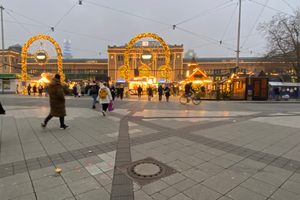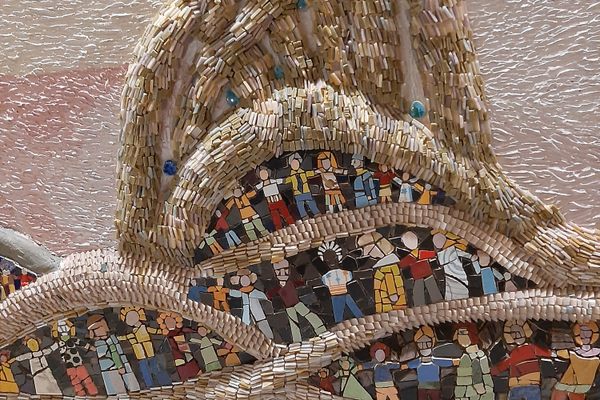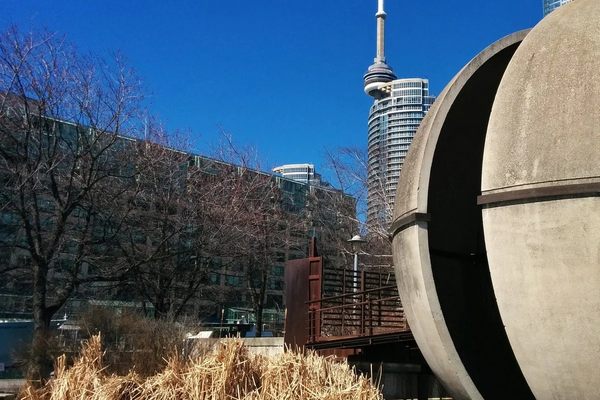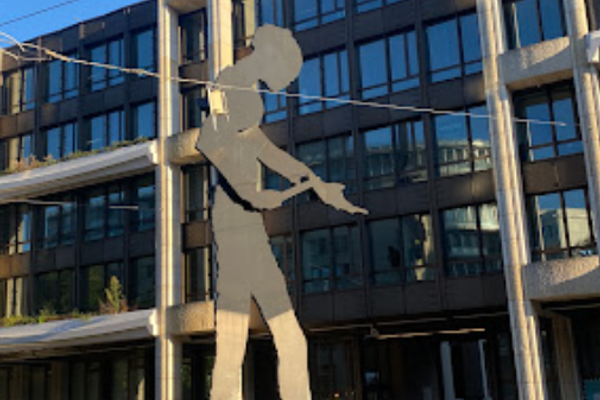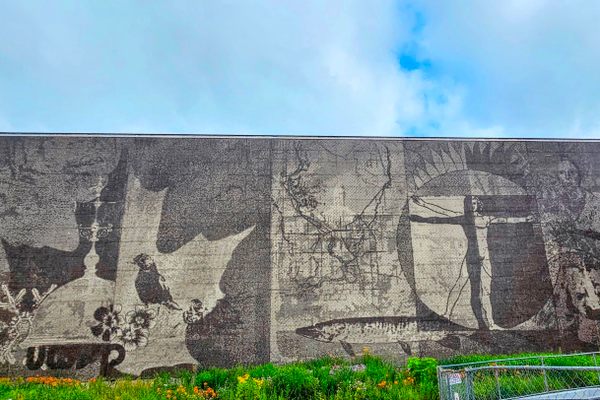About
Franco-American artist Niki de Saint Phalle (1930-2002) is best known for her vibrant and voluminous whimsical Nana figures, displayed globally, including three along the Leine River in central Hanover. She established deep connections with the German city, even earning honorary citizenship. (Saint Phalle also generously donated a noteworthy art collection to the Sprengel Museum.) Her final major work, the Grotto in the Royal Gardens of Herrenhausen, added to her contributions to Hanover.
Built in 1676, the Grotto was initially adorned with shells, crystals, and minerals, functioning as a place of enchantment and a cool retreat. However, it eventually fell into disrepair and became a storage space. In 2001, Niki de Saint Phalle and her team, supported by a foundation and sponsors, began a restoration process to convert the interior of the Grotto into a wondrous kaleidoscope. Two years later, the project was posthumously finalized following the artist's meticulous plans.
In the Grotto's three rooms, Niki de Saint Phalle's artistic expression is evident in mosaics of colored glass, mirrors, pebbles, and painted relief figures. The central room, Spirituality, features a vibrant spiral of red, gold, and orange symbolizing life's essence. The Night & the Cosmos pays homage to painter Matisse, with floating female forms against a deep blue backdrop. The sparkling silver room, The Day & the Light, is a hall of mirrors reflecting the brightness of life.
This Grotto, combining modern art and Baroque architecture, serves as a significant farewell and leaves a lasting impact on Niki de Saint Phalle's presence in Hanover's artistic history.
Related Tags
Know Before You Go
Situated in the northwest corner of the Herrenhausen Gardens, the Grotto is open daily (refer to the website for current hours). As of 2024, the entrance fee ranges from €6-8, depending on the season, and includes access to the gardens. Parking is available nearby for those driving, and the nearest stop for U-Bahn and buses is Herrenhäuser Gärten.
Community Contributors
Added By
Published
January 17, 2024

